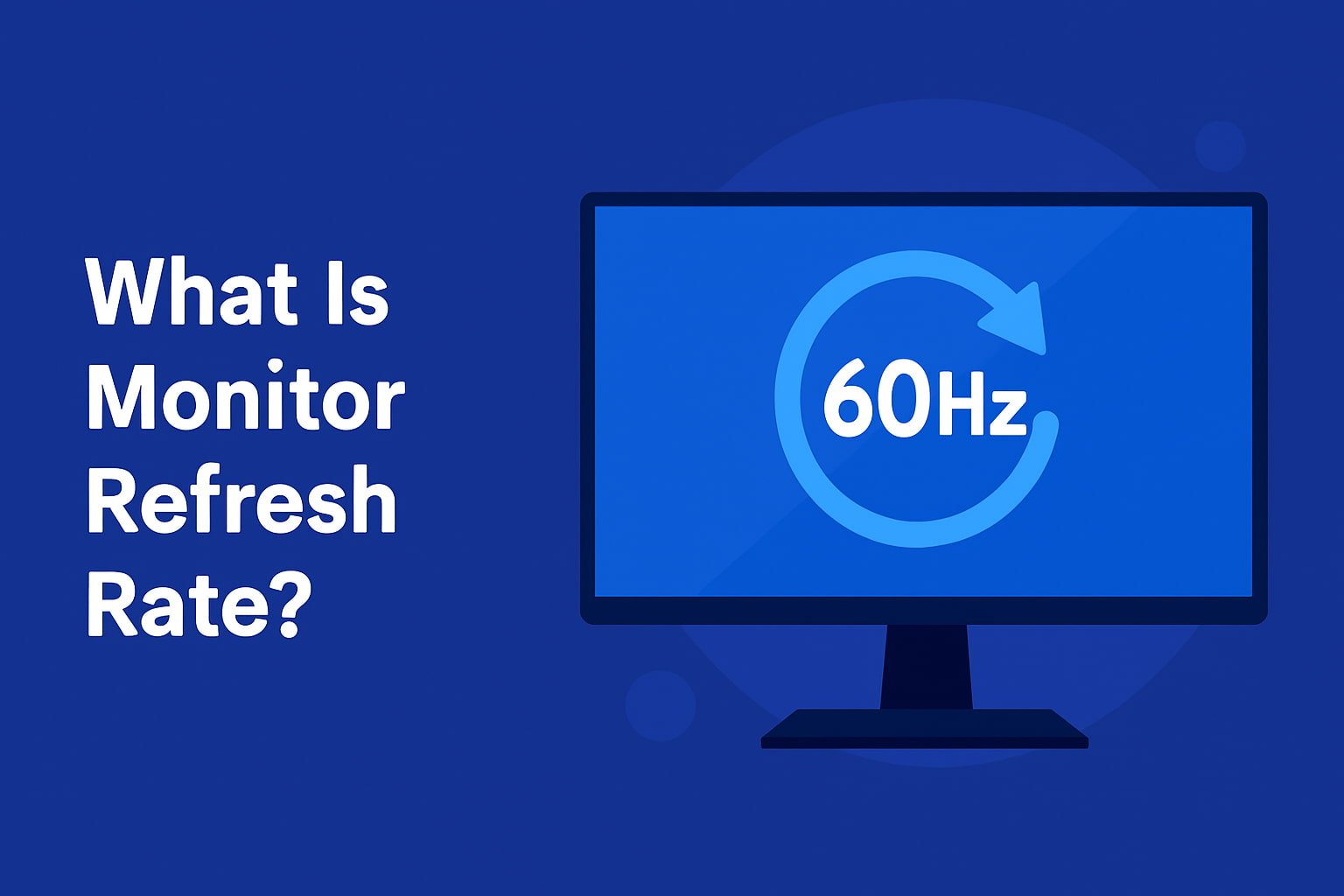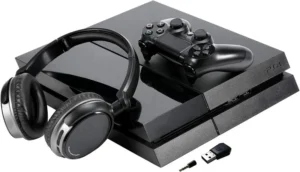If you’ve ever browsed for a new monitor, one of the first specs you’ve likely noticed is the refresh rate—most often 60Hz, 75Hz, or higher. But what does that really mean for your everyday experience? Is it worth paying more for a higher number, and more importantly, is 75Hz refresh rate good for gaming?
Let’s break it all down. Whether you’re working, gaming, editing videos, or just browsing the web, refresh rate plays a key role in how smooth and sharp everything feels. And while ultra-high refresh rate monitors get all the hype, a 75Hz monitor might just be the upgrade you didn’t know you needed — especially if you’re coming from 60Hz.
What Is Monitor Refresh Rate?
Refresh rate is the number of times your monitor updates the image on the screen each second. It’s measured in hertz (Hz). A 60Hz display updates the screen 60 times per second. A 75Hz monitor, on the other hand, refreshes 75 times per second — offering 25% more updates in the same timeframe.

That difference can improve everything from general smoothness to motion clarity in videos and games. For gamers in particular, this raises an important question: is a 75Hz monitor good for gaming or should you skip straight to 144Hz?
We’ll get there — but first, let’s explore why refresh rate matters, even for everyday use.
Refresh Rate vs. Frame Rate: What’s the Difference?
Refresh rate is what your monitor can display. Frame rate (or FPS) is what your computer or console can produce.
- Your GPU and CPU generate the frames.
- Your monitor decides how many of them it can actually show.
So even if your graphics card can pump out 90 frames per second, a 60Hz screen will only show 60 of them. To really enjoy smoother performance, both frame rate and refresh rate should be aligned.
If you’re upgrading from an older monitor, going from 60Hz to 75Hz helps reduce that bottleneck — giving you more from the hardware you already have.
Benefits of a Higher Refresh Rate (Even from 60Hz to 75Hz)
You don’t need to go all the way to 144Hz to see a difference. A jump from 60Hz to 75Hz can bring smoother animations, reduce screen tearing, and make scrolling feel noticeably more fluid.
Even better — 75Hz is good for gaming, good for productivity, and a smart middle ground for those who don’t want to break the bank.
Smoother Workflows and Reduced Eye Strain
If you spend long hours in front of a screen, a higher refresh rate can do more than just look nice — it can reduce eye fatigue.
With 75Hz or higher:
- Scrolling through spreadsheets or documents feels smoother
- Windows and UI elements move more fluidly
- Micro-stutters and flicker are reduced
If you’re wondering is 75Hz good for a gaming monitor and for work, the answer is yes. It’s a noticeable upgrade from 60Hz, without jumping into gamer-tier pricing.
Is 75Hz Refresh Rate Good for Gaming?
Now to the heart of it: is 75Hz good for gaming?
For most people, absolutely. If you’ve been using a 60Hz screen, upgrading to 75Hz gives you:
- Better responsiveness in fast-paced games
- Less motion blur
- A more immersive feel overall
It won’t match the buttery smoothness of 144Hz, but 75Hz is good enough for gaming if your PC can push over 60 FPS. Especially for casual titles, strategy games, MOBAs, or single-player adventures, you’ll notice the upgrade.
And yes — 75Hz is good for PC gaming, especially if you’re not competing at esports level.
Is 1080p 75Hz Good for Gaming?
1080p at 75Hz is actually one of the best combinations for budget gaming right now. You get:
- Sharp full HD resolution
- Enough refresh rate to reduce stutter
- Compatibility with most mid-range GPUs
This setup handles popular titles like Fortnite, Rocket League, and Minecraft with ease. So if you’re asking is 1080p 75Hz good for gaming, the answer is yes — and it’s one of the smartest entry-level gaming setups you can build.
Is 75Hz Good for Console Gaming?

It depends on the console. For last-gen systems like the Xbox One or PS4, most games cap out at 60fps, so 75Hz doesn’t add extra frames. But it still offers a slightly smoother feel in UI transitions and reduces screen flicker.
For newer consoles:
- Is 75Hz good for gaming PS5? — It’s okay, but PS5 is designed for 120Hz output in many games. You’ll be capped at 60 in most cases, but 75Hz monitors still run fine with it.
- Is 75Hz good for gaming Xbox One? — Same idea. Smooth enough for casual play, but not taking full advantage of the hardware.
Bottom line: 75Hz is good for console gaming, but won’t unlock next-gen performance. It’s a mild improvement over 60Hz, especially noticeable if you play fast-moving games.
Is 75Hz 5ms Good for Gaming?
You’ve probably seen specs like “75Hz / 5ms response time” listed on monitor boxes. So the question is, is 75Hz 5ms good for gaming?
Yes — for the vast majority of players, that combination is perfectly fine. A 5ms response time is fast enough to prevent ghosting in most situations. Combined with 75Hz, you’ll get smooth visuals and responsive gameplay in casual and mid-level competitive matches.
Unless you’re aiming for professional esports, you likely won’t notice a difference between 1ms and 5ms. So if you’re eyeing a monitor with these specs, rest easy — 75Hz 5ms is good for gaming.
Is 75Hz Good for Competitive Gaming?
Now let’s address the hardcore gamers: is 75Hz good for competitive gaming?
That depends on your standards and the type of games you play. If you’re into high-speed shooters like Valorant or Apex Legends and pushing for the highest FPS possible, 144Hz or higher will definitely give you an edge. Those extra frames matter when reaction time is everything.
But for casual ranked matches, solo queue, or even amateur tournaments, 75Hz is good enough for gaming if you know what to expect. You’ll still benefit from lower input lag than 60Hz, and gameplay will feel more responsive overall.
So while 75Hz isn’t the gold standard for competitive players, it’s still more than capable of delivering a smooth experience for most games.
Is 75Hz Monitor Good for Gaming Reddit Insights
If you head over to forums like Reddit, you’ll find mixed takes on the whole refresh rate debate. Some users swear by 144Hz, while others say 75Hz monitor is good for gaming as long as you’re not chasing frames competitively.

The general consensus? 75Hz is good for gaming Reddit agrees, especially for:
- Budget-conscious gamers
- People upgrading from 60Hz
- Non-FPS-focused games like RPGs or simulators
If you’re coming from an old office monitor and stepping into the gaming world, 75Hz is good for a gaming monitor and a great place to start.
Is a 75Hz Monitor Good for PC Gaming?
To close the loop, is a 75Hz monitor good for PC gaming?
Yes — and not just “good enough.” For many gamers, it hits the sweet spot between affordability and performance. It’s smooth, fast, and far better than basic 60Hz monitors. Especially when paired with 1080p resolution, you’re getting excellent clarity with responsive gameplay.
Whether you’re a weekend warrior or someone building their first rig, 75Hz is good for gaming, and in many ways, it’s the smarter choice over jumping straight to 144Hz without the hardware to support it.
Final Thoughts: 75Hz Is Good for Gaming — Just Know Your Needs
Let’s bring it all together. If you’ve been wondering:
- Is 75Hz good enough for gaming?
- Is 75Hz monitor good for gaming Reddit agrees?
- Is 75Hz good for gaming monitor, console, or PC?
The answer is yes — with some context. 75Hz is a great upgrade from 60Hz, and perfect for casual or intermediate gamers, everyday productivity, and light editing. It’s also easier on your eyes and doesn’t demand a high-end GPU to run smoothly.
If your goal is just to enjoy games with smoother visuals and better comfort — then 75Hz is good for gaming. But if you’re aiming for the sharpest possible edge in competitive scenes, 144Hz and beyond might be worth the jump.